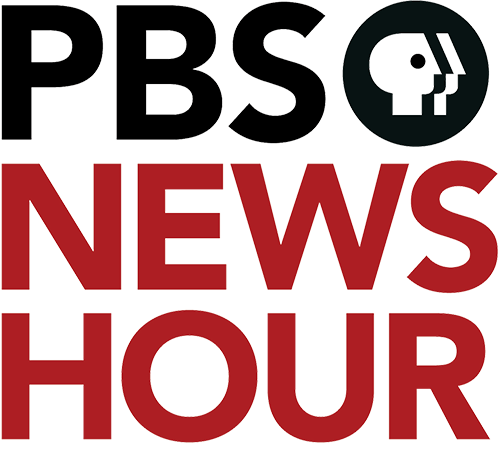On the rise: Kennedy Huff


Kennedy Huff, a member of the inaugural SRL All-Stars Class, wrote about her internship experience at KLRU in Austin, Texas. Kennedy’s internship is sponsored by the Corporation for Public Broadcasting’s American Graduate: Let’s Make it Happen initiative.
During her internship at KLRU in Austin, Kennedy Huff produced this story about a classical guitar program at the Gardner Betts’ Juvenile Justice Center that was broadcast on the PBS NewsHour September 8.
Week 5:
This week of my internship brought me excitement and anxiety. After finalizing the topic for my summer news package, I now know I will produce a story focusing on how one program in Austin uses classical guitar to give students in a local juvenile detention center a positive outlet for their emotions.
I was concerned that I would not be given clearance to schedule interviews for the story because of the sensitive subject matter and because I would be speaking with children. On Friday, I interviewed the founder of the program that works with the local juvenile detention center. He had a lot to say about how the program has truly provided a positive, uplifting environment for these children.
Next week I plan to go to the juvenile detention center to interview the general counsel for the center, the current leader of the program and, hopefully, a student. I would be overjoyed if I could hear from a student, because they could add a personal aspect to the story.
This weekend I will transcribe the interview I have and brainstorm alternative interviews to create a well-rounded story if I am unable to secure a student interview.
I have confidence that next week I’ll get great stuff for my story. I am thoroughly looking forward to seeing how this story will turn out.
Week 4:
With my first story complete, this week was the time to figure out my next piece, the big piece: the one that may or may not air nationally on PBS NewsHour.
When it came to researching for not only an interesting topic, but a topic that centered on youth, I faced some difficulty. The stories are out there, it was just a matter of finding them.
The brainstorming process was quite scattered, but when I took some time to think about my environment and how eclectic Austin is, the ideas came flooding in. I narrowed the pitches down to three: youth entrepreneurship, youth activism (an expanded form of my first story) and focusing on how youth in detention centers express themselves with music. In a few days, I should find out which pitch is preferred over the others.
Throughout the rest of the week we worked on a story about the Greater Austin Black Chamber of Commerce branching out to a suburban community north of the city. Gentrification of Austin’s historic east side has caused many black-owned businesses to move into the suburbs because that is where the community is moving. It was interesting to learn that although the community is moving away, there are still strong ties to East Austin.
This week was mainly focused on getting my ideas on paper. The brainstorming process helped quite a bit because I was able to organize my thoughts into cohesive stories.
Week 3:
This week began with interviews upon interviews. I was rushing from here to there, armed with a notepad in one hand and light stands in the other.
Since my story was due Thursday, I scheduled interviews for the beginning of the week. First up was a young man who was motivated to organize by the growing number of stories about unarmed black men and teens being shot by police. He was not the only one. I had a great time conducting the interview and had lots of quotes to choose from for my story. Before I started the interview I learned to set up lights. It was probably the easiest part of setting up, but also the heaviest.
In the following days I worked to get interviews with members of law enforcement to see if they had any rebuttal to the claims made during one of my interviews that a particular county’s police department in the greater Austin area abuses their power while on duty. Unfortunately, at the last minute the person from the department cancelled our interview.
Luckily, through research I found that Austin’s Police Department established a program specifically for purposes of outreach to various communities. The information she gave not only helped localize the story, but showed how our city works to help bridge gaps between community and law enforcement.
Thursday was spent putting the finishing touches on the story. I finalized the script, recorded voice tracks and sat in on the editing process to see how it was done. It was a great experience to create a news package for KLRU-TV. This is something I did not imagine myself doing fresh out of high school. My story, “Austin millennials fighting against racial injustice,” aired on Saturday, July 11. Watch my story here.
Check in soon for my next adventure here at KLRU.
Week 2:
The second week of my internship I received my first assignment as a reporter, and it didn’t take long to come up with the topic: young black activists. With the increasing media coverage of officers involved in the deaths of black men and women, more and more people are taking to the streets to demand change. As a journalist, I thought it would be interesting to talk to young people about these occurences.
Although Austin, Texas rarely faces issues of police misconduct, there have been protests to show solidarity with other cities. To find the stakeholders for my story, I took to social media to find local activists. Sites such as Twitter and Tumblr are places where most people my age express themselves. While looking at a page dedicated to a protest here in Austin, I was able to find a girl my age who is very involved in activism within the city.
This Thursday, I interviewed my subject on the UT-Austin campus, which was the starting point for the Millions March Texas protest in January. While interviewing her, she mentioned quite often that our generation has to actually be willing to make a stand for justice and a push toward equality. Next week I will interview more people in the 18-22 age range to see the different ways young adults are fighting injustice.
I will also spend next week completing the editing process for this story and writing an online version. If the story is deemed good enough, it will run over the weekend during PBS NewsHour for the local segment.
Well that’s all for this week. Stay tuned for a wrap-up of next week’s adventures!
Week 1:
The summer before college is usually filled with pool parties, road trips or even earning a couple credit hours at the local community college. That’s not the case for me.
You see, I was granted the incredible opportunity to intern for KLRU-TV, the Austin PBS affiliate station. Although I have worked with the station before as a high school correspondent, I think this internship is going to give me a true taste of what the journalism industry is like.
The first day of my internship, I showed up to the studio early, eager for what the day had in store. Over the course of the day, I spent time brainstorming story ideas for a news package. With so much news occurring every day, you would think I would have found my topic instantly. By lunch, I had yet to find a topic and began to doubt my journalistic abilities. But it just took a look around the eclectic city of Austin to get inspiration. Once I discovered my topic, I spoke with Allison and Blair, my producers. Then I got my first assignment.
Two weeks ago, Charleston, South Carolina made national news when a lone gunman allegedly shot and killed nine black members of the Emmanuel African Methodist Episcopal Church during bible study. The suspect Dylann Roof was a known racist and idolized white supremacist paraphernalia. Due to this tragedy, many South Carolina residents are demanding that the state capital take down the Confederate flag. This reaction inspired local UT Austin students to start a petition to remove a statue of Jefferson Davis, president of the former Confederate States of America, from campus grounds, feeling the statue represents racism. After the statue was tagged with the phrase “Black Lives Matter,” UT Austin’s student government and vice president for diversity and community engagement held a press conference in front of the statue and I went with Allison and Blair to cover it.
As a young reporter, I felt compelled to ask a question and get a quote or two for the story. It was nerve wracking, but afterwards I realized the experience reaffirmed my belief that this is what I should be doing.
Later that day, we traveled to a local AME church holding a community meeting regarding race relations in Austin. I gathered tons of b-roll to use for our story on the Charleston shooting’s effect on our own city. It was interesting to see how I could find different camera angles that other news affiliates wouldn’t have on their nightly programming.
Overall, my first week was incredible. I am so extremely grateful for this opportunity, and cannot wait to see what else is in store over the next seven weeks.






